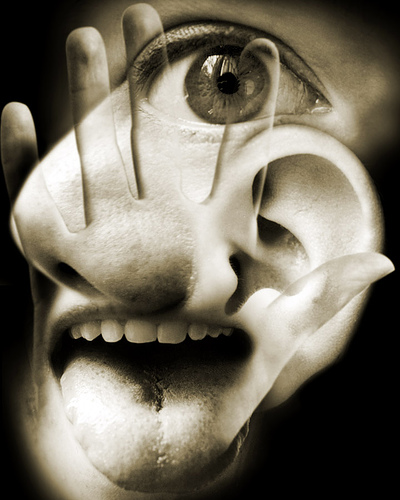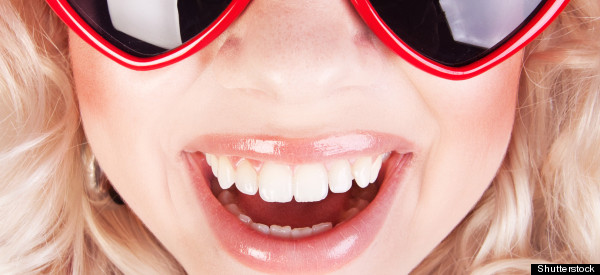Types of Laughter
Fake Laughter
This type of laughter comes in handy when your boss tells a dumb
joke and you have to laugh to make them less likely to fire you. Fake
laughter is usually done by simply opening your mouth and pushing out a
sound. It often sounds like: “ha ha ha”.
Sometimes I just forgo fake laughter all together and instead say
something like, “That was so funny, I forgot to laugh!” The recipient
typically understands and moves on.
Evil Laughter
Although evil laughter is generally pretty evil, it’s a lot of
fun to imitate. This is the type of laughter a villain on a Disney
movie is all too keen to let out. It stereotypically sounds like
“Muhahhahaha ha ha ha!"
Once you hear any character on any movie laugh in that matter,
you know without a doubt that they are in fact a “bad guy”. Sorry if
that ruins any plot twists for ya.
Hysterical Laughter
This is a fun strand of laughter, can be quite contagious too.
This type of laughter can surface in different ways. One way is lack of
sleep. Everything and nothing is funny, that fact alone makes it even
funnier.
Pretty soon, you’re laughing so hard that tears are coming out of
your unsuspecting eyes. Your body also becomes an unwilling
participant-getting hunched over and possibly doing a little
laughter-jig.
Another way this type of laughter can creep into your soul is if when you’re laughing it is quite inappropriate…
Inappropriate Laughter
Smooth segue, Christine. Thank you. At one point in our lives or
another we’ve all had the fortunate misfortune of inappropriate
laughter.
Fortunate because laughter is fun (and
good for your health
, remember?). Misfortunate because this type of laughter could potentially offend someone else or ruin a particular mood.
Classic example of this is laughing at church during a serious
sermon. Maybe someone farted, which is pretty funny. You’re the only
one that heard it or smelled it, maybe you dealt it.
The point is: right now is not the time to break into hysterics,
its just plain…inappropriate. Just the sheer thought of your laughter
at this inconvenient time elicits more and more laughter.
If someone else hears your laughter they could be infected by it, because we all know that laughter is contagious…
Contagious/Infectious Laughter
This is the type of laughter that even just hearing makes you
want to laugh. Oftentimes, this laughter can be inappropriate and make
you laugh just because this is the case.
Research also supports the notion of contagious laughter as a
bonding mechanism in social behavior.
That is why
comedy clubs
love to pack their customers in tight: the laughter is contagious and brings about an overall better energy in the room.
Baby Laughter
This is pretty self-explanatory. There is nothing more precious
than the sound of a baby’s laughter. Aaliyah even used a recording of a
baby’s laugh in her 1998 hit “Are You that Somebody?”
Nervous Laughter
One of the more infuriating types of laughter for those on the
other end of it. Imagine an adult scolding a child and the child can’t
stop laughing. Imagine a girl questioning her boyfriend on some of his
indiscretions only to be met with chuckles.
Ew, why are you imagining all of this stuff? Stop.
Your thoughts are your reality, remember?
The point is: this type of laughter seems to surface at the most inconvenient times.
This laugh may also be coupled with shifty eyes and an overall
look of doom on the laugher’s face. Common laugh sound: “huh huh huh
huh…huh..”
Silent Laughter
One of my personal m.o.’s of laughing. This happens when you
laugh so hard no sound actually comes out. It’s like the laugh gets
confused and forgets to come from the back of your throat.
When I really get going laughing I can stay silent and hunched
over for up to a minute! Well, I haven’t actually timed it out, but I’m
pretty sure I could!
Another form of silent laughter is when you think something is
really funny, but you know you can’t laugh (or else be deemed with
inappropriate laughter). It’s usually at the expense of others.
This laughter stays lodged inside of your brain and you hear it
loudly in your head. It may sound something like, “Ha! I’m glad you’re
out of the competition now I can win! Ha!”
Teasing Laughter
Teasing laughter is the cousin of the ol’, “Nanna nanna boo boo!”
This type of laughter is not the kind of laughter you usually like to
hear.
Nelson, the bully character on the long-running animated series,
The Simpsons has one of the most menacing, taunting laughs. He’s always
too eager to add his trademark, “ha ha!” at the sight of another’s ill
fortune.




